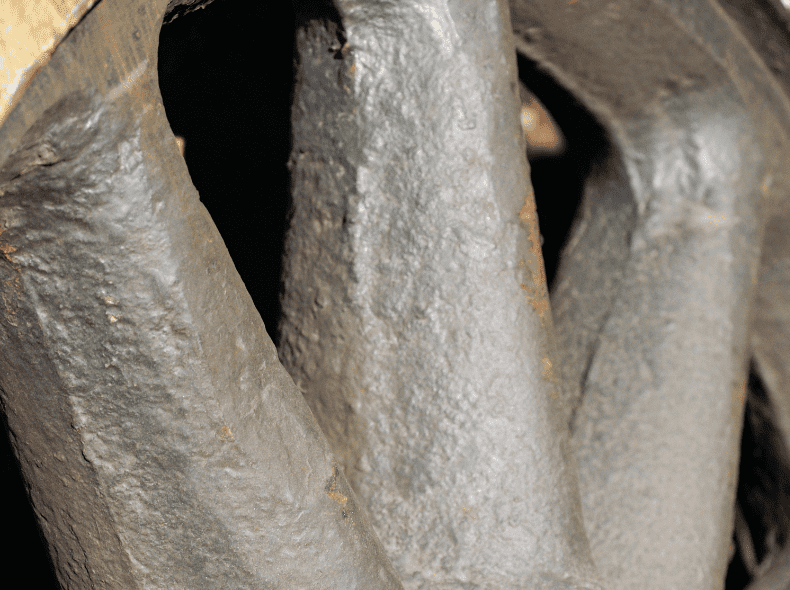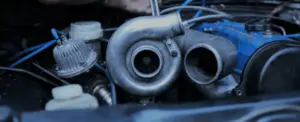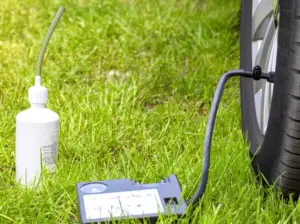Rims look great when they are new, but they can fade and show their age over time. More of a concern is can they corrode and cause your tires to leak.
This article will cover everything you need to know about rim corrosion and tire leaks.
Since the advent of TPMS, drivers have become more aware that tires will always lose some air. It can’t be helped, but as rims are more popular than ever, the speed at which air leaks from tires is more noticeable than before.
Less popular steel wheels may be heavier and less attractive, but they rust more slowly than rims corrode, so they are less likely to leak air around the lip and bead of a tire.
Why Does Rim Corrosion Cause a Slow Leak?
Rim corrosion can be difficult to spot because it often takes hold inside the tire in areas that are not visible from the outside and may be hidden.
What’s on the outside is the tip of the iceberg, and if the inside of the rim is badly corroded, it could have small cracks within it that may not even be noticeable to the human eye.
However, corroded rim cracks can let small amounts of air molecules through them, eventually showing as a slow leak.
The lip area on a rim is very important as it needs to be in perfect condition to hold the tire bead in place.
If there isn’t a perfect seal between these two parts, air will leak out between the lip and the bead.
Finally, the rim around the tire valve can be a place where corrosion sets in early.
Look for signs of dullness where the protective coat has been taken away and pitting or bubbling up.
This is your sign that the tire valve housing on the alloy may not be holding air.

What Does Rim Corrosion Look Like?
Signs of rim corrosion include faded protective coatings on wheels, bubbling near the tire bead and nut housing, white spots on rims caused by water damage, and cracking paint around valve stems.
Rim corrosion results from a chemical reaction between the wheel and its surroundings, which causes pitting.
Salt in the Salt Belt states is bad for rims, especially chrome coated ones, and manages to work its way between the rim and the tire’s bead.
This can lead to cracks in the rim that will allow moisture in and cause you to lose air from your tire.
If you take the tire off and look underneath the lip, you may see powdery aluminum oxide preventing the tires from sealing against the aluminum rim. Even new rims are susceptible to this happening.
How To Prevent and Fix Rim Corrosion To Prevent Leaks
Avoid car washes. These can cause the rim to corrode when harsh brushes are scrubbed against its protective coating.
Clean your rims regularly. You should do this after each wash and/or rain or if you notice any residue on the wheel. Use warm water and mild dish soap to clean your rims, then dry them with a clean cloth afterward.
A bad rim seal can be fixed by sandblasting the lip area of the rim. Expensive and not what most people are prepared to do.
A quick option is to wire brush the lip of the rim – not anywhere else on it, as you will take away the clear coat- and apply a bead sealer.
It may not permanently seal the leak or stop corrosion, but it should last for a year of salt getting through and causing more leaks.
Related Article: Is Alloy Wheel Corrosion Safe? – It Depends [Answered]
What Causes Tire Corrosion?
Tires do not corrode, but rims do. Often, wheel corrosion will adversely affect tires and make them look like they are corroding too.
You could be forgiven for thinking that dry rot and cracks are tire corrosion. Technically it is not the same thing.
Tires can show where in more ways than just a reduction in the tread. If the tires go brown, it’s a sign that the chemicals used by the manufacturer are reacting with sunlight as they leak away from inside the tire.
You may also see cracks in the tires. Some of these cracks are normal and, if shallow, cause no concern. The weather causes these. Deeper cracks can be dangerous, often called dry rotting of tires.
Conclusion
Rim corrosion can cause tires to Leek. Generally, the leak will occur around the lip of the rim and the tire bead. This occurs mostly in the Salt Belt states, where driving in the winter snow and ice forces road salt between the rim lip and the tire bead and corrodes the metal alloy in this area.
Other areas that can cause a leak on the rim are the valve stem area if the rim loses its clear coat and starts bubbling.
A very corroded rim may have small cracks inside that may not be visible to you while the tire is fitted. These small cracks can let air through, resulting in a very slow air leak.


![Tire Pressure Light Blinking But Everything Fine - [SOLVED] TPMS-dash-warning](https://carzaza.com/wp-content/uploads/2023/12/TPMS-dash-warning-300x150.png)
![Why Does My Tire Pressure Keep Going Low? [ANSWERED] INFLATING-FLAT-TIRE](https://carzaza.com/wp-content/uploads/2023/12/INFLATING-FLAT-TIRE-300x150.png)



![How Long Do New Tires Take To Put On? [ANSWERED] Torque-wrench-tire](https://carzaza.com/wp-content/uploads/2023/12/Torque-wrench-tire-300x150.png)





